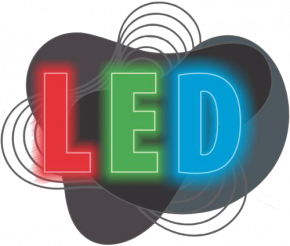Bitcoin und Blockchain: Vom Scheitern einer Ideologie und dem Erfolg einer revolutionären Technik SpringerLink
In Bitcoin, your transaction is sent to a memory pool, where it is stored and queued until a miner picks it up. Once it is entered into a block and the block fills up with transactions, it is closed, and the mining begins. Since a block can’t be changed, the only trust needed is at the point where a user or program enters data. This reduces the need for trusted third parties, such as auditors or other humans, who add costs and can make mistakes. In preparing the information in this section of the Website, Bitwise has not taken into account your individual investment objectives, financial situation or investment needs. Nothing in the website constitutes or is intended to constitute financial, legal, accounting or tax advice.
Blockchain is an immutable digital ledger that enables secure transactions across a peer-to-peer network. It records, stores and verifies data using decentralized techniques to eliminate the need for third parties, like banks or governments. Each block is encrypted for protection and chained to the preceding block, establishing a code-based chronological order. This means that data stored on a blockchain cannot be deleted or modified without consensus of a network.
- Two government accountants (let’s call them “miners”) have the same file on theirs (so it’s “distributed”).
- After the pre-specified conditions are met, it automatically triggers the next step in the transaction or process.
- By continuing to use and access this website following such changes, you agree to be bound by any changes we make.
- By greatly reducing paperwork and errors, blockchain significantly reduces overhead and transaction costs, and reduces or eliminates the need for third parties or middlemen to verify transactions.
- Smart contracts reduce human intervention and reliance on third parties to verify the fulfillment of the contract terms.
They feature selective transparency, which allows blockchain admins to restrict specific parts of the blockchain to certain participant pools while maintaining public visibility over the rest of the thread. This way, organizations are entitled to a certain level of privacy when immutably sharing data independent of a third party. Insurance providers can use blockchain to track claims in real time, resulting in a more transparent and secure claims process. In addition, adding claims to a blockchain could prevent issues like duplicate claims, eliminating fraud. Blockchain can also automate various insurance tasks, reducing unnecessary paperwork and wait times. Aside from saving paper, blockchain enables reliable cross-team communication, reduces bottlenecks and errors while streamlining overall operations.
Export from Switzerland
Healthcare services primarily use blockchain to securely encrypt patient data stored in their medical records. Particular functions, like smart contracts, automate processes such as insurance claims processing and medication adherence monitoring, which enhances efficiency and reduces administrative overhead. Blockchain also facilitates the secure sharing of medical data between healthcare providers, patients and researchers, and is even being recruited by genome-sequencing startups to help crack the genetic code. Deemed a “new weapon in cybersecurity,” blockchain’s decentralized, tamper-proof ledger comes with built-in defenses against theft, fraud and unauthorized users via cryptographic coding and consensus mechanisms. Because of this, blockchain has been adopted into cybersecurity arsenals to maintain cryptocurrency, secure bank assets, protect patient health records, fortify IoT devices and even safeguard military and defense data.
Ethereum is rolling out a series of upgrades that include data sampling, binary large objects (BLOBs), and rollups. These improvements are expected to increase network participation, reduce congestion, decrease fees, and increase transaction speeds. Proving property ownership can be nearly impossible in war-torn countries or areas with little to no government or financial infrastructure and no Recorder’s Office. If a group of people living in such an area can leverage blockchain, then transparent and clear timelines of property ownership could be maintained.
Switzerland – a hub for artificial intelligence (AI)
Neither this website nor information it contains should be accessed by a US person or legal entity or taken, transmitted or distributed (directly or indirectly) into the United States. Deloitte AG is an affiliate of Deloitte NSE LLP, a member firm of Deloitte Touche Tohmatsu Limited, a UK private company limited by guarantee (“DTTL”). DTTL and each of its member firms are legally separate and independent entities. Please see About Deloitte for a more detailed description of DTTL and its member firms.
Stay up to date with our blockchain news
As a buzzword on the tongue of every investor across the globe, https://orbifina.co/de-ch/ stands to make business and government operations more accurate, efficient, secure, and cheap, with fewer intermediaries. Transactions on the blockchain network are approved by thousands of computers and devices. This removes almost all people from the verification process, resulting in less human error and an accurate record of information.
Scalability Issues
Corda is a distributed ledger platform designed for businesses, enabling secure and private transactions on permissioned networks. It allows organizations to share data and execute agreements with only the relevant parties, making it ideal for industries like finance, healthcare and supply chain management. In blockchain technology, each transaction is grouped into blocks, which are then linked together, forming a secure and transparent chain.
